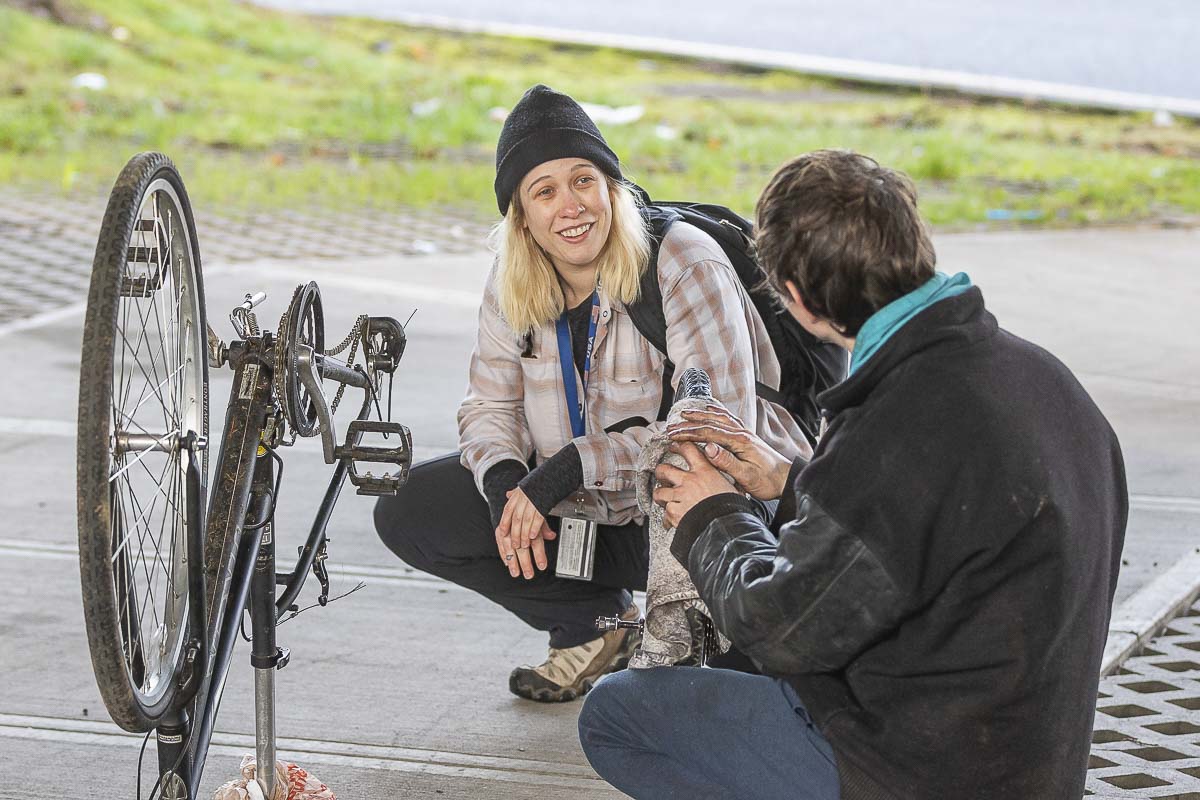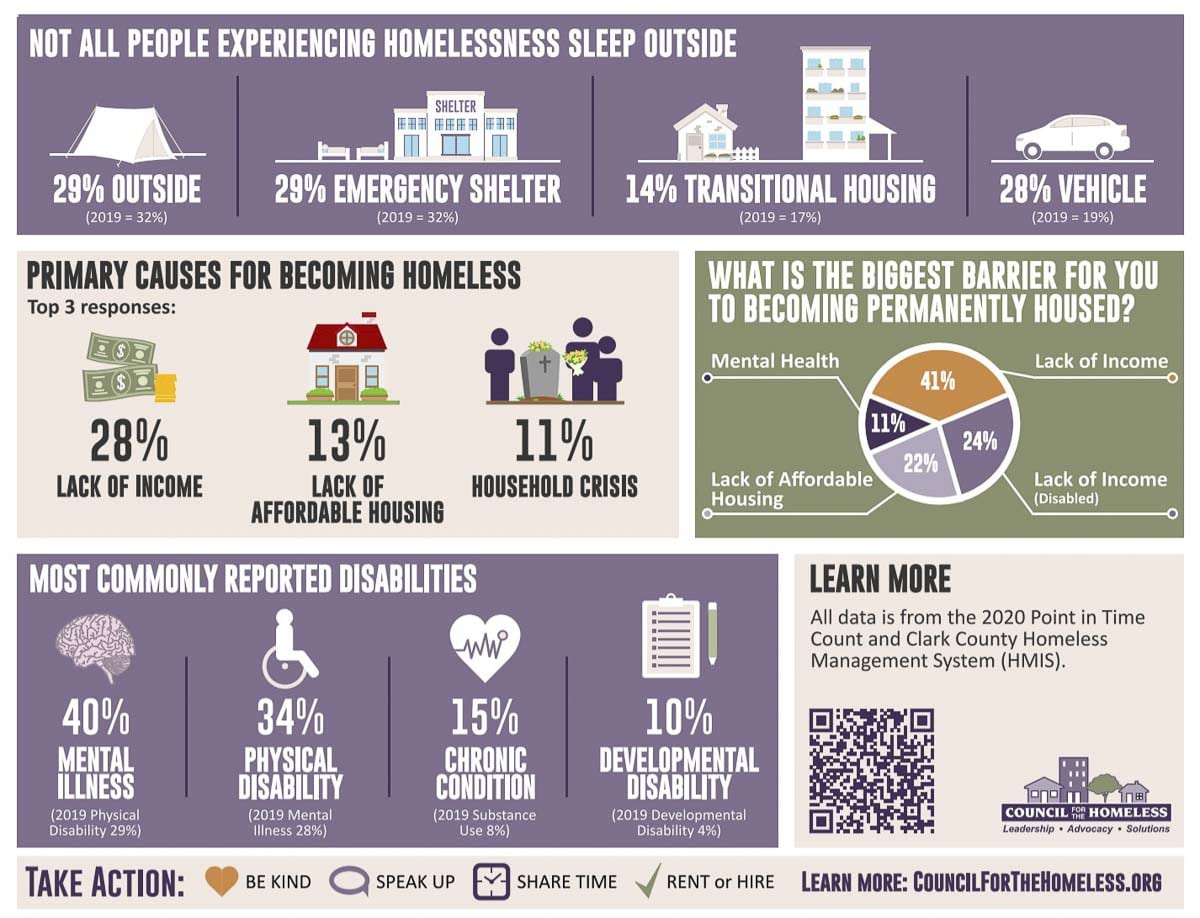The Point in Time Count from January found fewer homeless people, but more of them living outside of shelters and housing
CLARK COUNTY — The number of homeless on the streets of Clark County fell slightly during this year’s Point in Time Count, but the number of people living outside of shelters continues to rise.
That was the takeaway of this year’s snapshot, which happened on Jan. 30, with more than 60 people fanning out across the county to engage with individuals experiencing homelessness.

New partners this year also surveyed people accessing services at the Vancouver Navigation Center, Clark College, Sea Mar Health Clinics, X-Change Recovery center, and the Lewis River Mobile Food Bank.
This was the second year surveyors were able to make use of a mobile app designed to provide a more accurate way to track families and individuals who are homeless. The final count was derived from the app, hard copy surveys, as well as the Homeless Management Information System (HMIS) used at emergency shelters and transitional housing. That data was then analyzed to eliminate anyone who may have been contacted twice.
Differences from 2019
This year, a total of 916 people were contacted, including 516 who were unsheltered, living in a tent, car, or on the streets. A total of 400 people were in emergency shelters or transitional housing.
The overall count was down 4 percent from last year when 958 people were contacted. However, the number of people living unsheltered was up 6 percent, while the number of people in emergency shelters fell 14 percent from last year. Transitional housing usage was also down 18 percent over 2019.

A total of 120 people represented families with children, a 10-percent decline from last year, while there was a 24-percent increase in young adults on the streets (18-24 years old). Of those surveyed, 61 people were over the age of 62, a 7 percent increase from 2019.
Nearly eight in 10 said they had been living in Clark County before becoming homeless, while 9 percent said they had come to the area from Portland or another part of Oregon.
Perhaps most concerning was the sharp increase in the number of people identified as chronically homeless, which is defined as having one or more disabilities and experiencing homelessness for at least one year, or four experiences of homelessness over a three-year period. That subpopulation was up 23 percent over last year, from 160 in 2019 to 197 this year.
“The trend of more people experiencing chronic homelessness on our streets means our community must invest further in targeted, intensive supports,” said Kate Budd, executive director with Council for the Homeless, “including behavioral health treatment and permanent housing that facilitates people successfully moving off the streets and improving their quality of life.”
Also startling was the percentage of homeless who are members of a racial minority. While only 14 percent of Clark County residents identify as a race other than white, 24 percent of the homeless population fit into that category. That fits a trend across much of the country where communities of color are overrepresented among the homeless population.
As for the causes of homelessness, 28 percent cited a lack of income, 13 percent said they couldn’t find affordable housing, and 11 percent had left their home due to a household crisis.
Forty percent cited mental illness as a contributing factor, up from 28 percent in 2019. Thirty-four percent had a physical disability, while an additional 14 percent cited a chronic condition such as substance abuse.
An incomplete picture
The Homeless Point in Time count is conducted across the state, and the data is used by the Department of Commerce to direct grant funding, and progress the Clark County Homeless Action Plan.
The count is generally considered to be incomplete, and not representative of the full number of people experiencing homelessness in a community. However, it is consistent, and can help with determining trends over a period of years.

This year’s count comes as the city of Vancouver and Clark County are set to begin discussions soon about a joint approach to homeless issues. Share recently ceased operations of a day shelter at the Vancouver Navigation Center on Grand Avenue near Fourth Plain Boulevard, which had generated complaints from neighbors. As of now, that shelter is closed due to the COVID-19 pandemic, and the city intends to keep it closed until a new operator can be secured and a larger plan is put in place to provide services there.
On June 3, from 6-7 p.m., representatives from Council for the Homeless, Share, Community Services Northwest/SeaMar, and SafePark/GoConnect will discuss the 2020 Point in Time Count results, in particular regarding the populations served by their respective agencies. The meeting platform is Go To Meeting and the link is https://global.gotomeeting.com/join/525456181.
Questions will be taken from online participants using the chat feature.
To learn more about Clark County’s Homeless Action Plan and homelessness, visitthe Council for the Homeless website.




